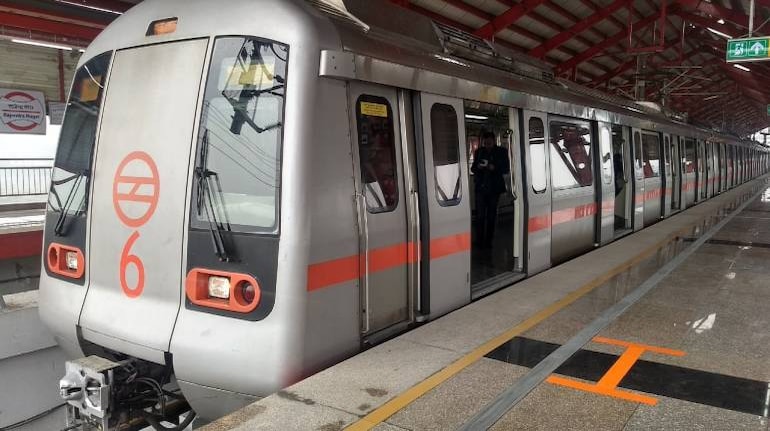
Delhi Metro clocks ridership of 2.49 lakh as services resume on entire network
As many as 12,987 smart cards were sold on September 14. Penalties were imposed on 182 passengers for causing nuisance
by Vandana RamnaniOn the first working day after the resumption of services on the entire network to pre-Covid levels, the Delhi Metro on September 14 clocked a ridership of 2.49 lakh, officials said.
Line-1 had 29,394 passengers, Line 2 had 76,266, Line 3 had 67,114, Line-4 had 7908, Line-5 had 10,370, Line-6 had 21,354, Line-7 had 15,420, Line-8 had 16,349, Line-9 had 1,472 and the airport Line had a ridership of 4,237 until 7:30 pm, they said.
As many as 12,987 smart cards were sold on September 14. Penalties were imposed on 182 passengers for causing nuisance, they said.
Last week Delhi Metro officials had warned that in case people are found flouting norms, they can be penalised under the Metro Railway (Operations and Maintenance) Act and may also be handed over to police, if required.
COVID-19 Vaccine
Frequently Asked Questions
View more
How does a vaccine work?
A vaccine works by mimicking a natural infection. A vaccine not only induces immune response to protect people from any future COVID-19 infection, but also helps quickly build herd immunity to put an end to the pandemic. Herd immunity occurs when a sufficient percentage of a population becomes immune to a disease, making the spread of disease from person to person unlikely. The good news is that SARS-CoV-2 virus has been fairly stable, which increases the viability of a vaccine.
How many types of vaccines are there?
There are broadly four types of vaccine — one, a vaccine based on the whole virus (this could be either inactivated, or an attenuated [weakened] virus vaccine); two, a non-replicating viral vector vaccine that uses a benign virus as vector that carries the antigen of SARS-CoV; three, nucleic-acid vaccines that have genetic material like DNA and RNA of antigens like spike protein given to a person, helping human cells decode genetic material and produce the vaccine; and four, protein subunit vaccine wherein the recombinant proteins of SARS-COV-2 along with an adjuvant (booster) is given as a vaccine.
What does it take to develop a vaccine of this kind?
Vaccine development is a long, complex process. Unlike drugs that are given to people with a diseased, vaccines are given to healthy people and also vulnerable sections such as children, pregnant women and the elderly. So rigorous tests are compulsory. History says that the fastest time it took to develop a vaccine is five years, but it usually takes double or sometimes triple that time.
A few minutes after the metro services resumed operations on September 14, train services on the Yellow Line (Samayapur Badli to HUDA City Centre) were affected due to technical reasons.
The Delhi Metro Rail Corporation (DMRC) tweeted that train services will be affected due to “track repair work” between Rajiv Chowk (one of the busiest interchange stations) and New Delhi station.
Initially, when the metro services restarted on September 7 after five months, trains were being operated for 4 hours each in the morning and evening. Normal timings from 6 am to 11 pm were restored from September 12 onwards.
All lines of the Delhi Metro network comprising 349 km and 253 Metro stations are now fully operational and restored to pre-COVID levels.